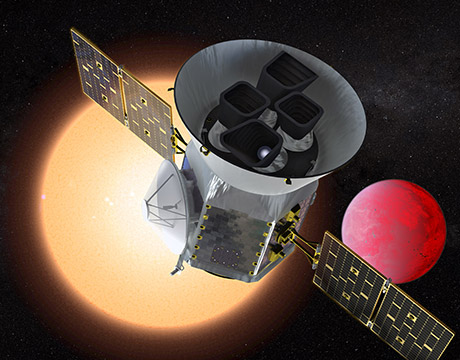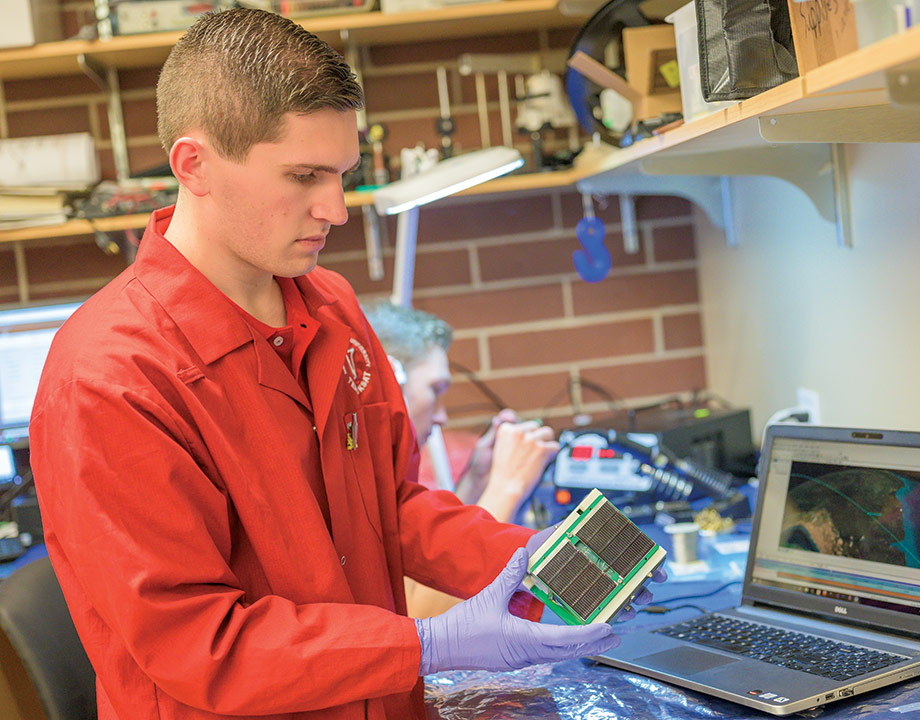Top 10 Space Missions Set to Explore New Frontiers, Part 1
Top 10 Space Missions Set to Explore New Frontiers, Part 1


Artist’s rendering of TESS, a satellite whose mission is to find planets outside the solar system. Credits: Goddard Space Flight Center / Chris Meaney / NASA
In the good old days, human space flight ruled. But robotic space missions have taken over, and advanced technology is helping us find new planets, better understand our universe, and discover clues to extraterrestrial life.
Jeffrey Hoffman, former U.S. astronaut and MIT professor, misses the good old days. “When I was flying in space, we were putting 40 astronauts a year, now we are putting four," he laments. Those astronauts are primarily dispatched to the International Space Station for maintenance and scientific research. But Hoffman realizes new technologies enable great advances, including NASA’s human landing on Mars scheduled for some time in the 2030s. The private sector will also play a key role in spaceflight, especially with contributions from companies like SpaceX, Virgin Galactic and Blue Origin, which are all striving to introduce new efficiencies and reduce overall costs to the industry. NASA’s Mars InSight Lander successfully launched Saturday, May 5, aboard the United Launch Alliance Atlas rocket from Vandenberg Air force Base in southern California on a6-month, 300-million-mile journey to study what lies beneath the surface of the red planet. InSight is scheduled to land on Mars on Nov. 26, 2018,where it will collect data on marsquakes, heat flow, how the planet wobbles, and other information that will help scientists gain a better understanding of the formation and evolution of rocky planets. InSight (short for Interior Exploration using Seismic Investigations, Geodesy and Heat Transport) is the first mission to probe the Martian surface. The operations are scheduled to end on Nov. 24, 2020. Ahandful of other exciting research missions will help us better understand the universe, making human landings on planets safer, and feeding the public’s hunger to explore the final frontier. Here are some of the top current and planned missions from NASA, ESA, and others.
Mars is intricate and complex, and it doesn't have just one surface. It's worthwhile studying Mars. Prof. Eric Ford, Penn State
1.) TESS -- TESS (Transiting Exoplanet Survey Satellite) launched on April 23. Also called the Planet Hunter, Tess will observe the nearest, brightest stars and possibly discover thousands of exoplanets, from small rocky worlds to giant planets. Many scientists consider TESS the most important launch in years, and it'll play a big role in studying the atmosphere and other characteristics of planets. One of its major goals is to discover planets transiting stars, which could otherwise be tough to spot, says Eric Feigelson, a professor of astronomy and physics at Penn State University.
TESS will monitor the brightness of 200,000 stars. When those stars dim, it could be due to an orbiting planet, which could lead to the discovery of a new planet. TESS has a wider range than its predecessor, Kepler, which discovered 2,343 exoplanets; 30 of those were Earth-sized planets within a habitable zone of a star.
"TESS will also identify promising candidates for detailed follow-up by other powerful telescopes like Hubble and the upcoming James Webb Space Telescope to better understand these planets’ atmospheres," says Natalia Guerrero, TESS researcher at MIT.
For You: The History of the Apollo Space Suit
2.) James Webb Space Telescope: The JWST is scheduled to launch in 2020. A higher-tech and more durable version of its predecessor, Hubble, the JWST will sit 1.5 million kilometers from Earth to provide a deep eye in space, compared to Hubble’s orbit of 570 kilometers from Earth’s surface. The infrared telescope also has more advanced optics, the better to see deeper into new galaxies. NASA will use it to study how galaxies and stars form. A key to analyzing such details is the JWST’s spectrograph, which can provide insight into physical properties of objects in space.
The JWST project, costing close to $500 million, is one of the most significant in space research history, Feigelson says. It's cool to discover new planets, but it’s just as important to understand the science of the universe, like planet mass and measuring distance between objects or between a moon and a planet, he says.
3.) OSIRIS-REx: This groundbreaking NASA mission has a simple objective of bringing an asteroid sample back to Earth, something that has never been done. The craft is traveling to an asteroid called Bennu, which is believed to contain elements of our solar system's history. OSIRIS-REx will return sometime in the 2020s. Others are also eager to mine the rich resources that may be found on asteroids. Planetary Resources, a private company, plans to launch a spacecraft, Arkyd 301, in 2020 to remotely conduct surface analysis of asteroids.
4.) Mars 2020 Rover: The Mars 2020 Rover mission is a step to prepare the planet for human exploration. It’s scheduled to take off in July or August, when the planet will be in a good position for NASA to land a robotic mission.
The mission’s centerpiece will be the Rover vehicle, which will conduct surface and environmental analysis, check for water, and perform other tasks like extracting oxygen from the 96 percent carbon atmosphere, which is key in preparation for human exploration. The car-sized Rover is 3 meters long, 2.7 meters wide, and 2.2 meters tall, and at 1,050 kilograms is lighter than a compact car. Rover has 23 cameras and sensors to study the characteristics of Mars, as well as antennas that can send information to Earth in five to 20 minutes. It’s fueled by the heat of plutonium radioactive decay.
"Mars is intricate and complex, and it doesn't have just one surface,” says Eric Ford, a professor for astrophysics at Penn State. “It's worthwhile studying Mars.” 5.) ISS: The U.S. will end support for the International Space Station in 2024, and its future is uncertain. Today, it’s the only manned mission in space, says MIT's Hoffman.
"NASA would love to attract more commercial uses of the space station, or have a commercial entity take over," he says. It could be used to train astronauts, since "it's better to have people in lower orbit than on the moon," he says.
Sending astronauts to ISS has several benefits. One goal is to test the health of astronauts staying in space for long periods, sometimes more than six months. Half of ISS is dedicated to space exploration, and the other half to scientific activities. Maintaining ISS, however, is very expensive.
Read Part 2 of “Top 10 Space Missions Set to Explore New Frontiers” to discover more about important space missions.
Agam Shah is an associate editor at Mechanical Engineering magazine. You can email him at ShahA@asme.org, or follow him on Twitter at @agamsh.






